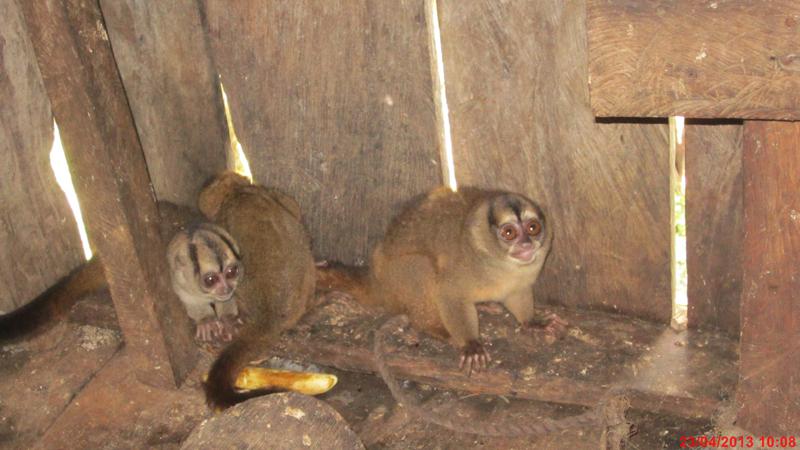Angela Maria Maldonado Rodriguez
Other projects
21 Jan 2004
The Woolly Monkey Project: Status and Conservation of Primates in Amacayacu National Park (Amazonas Department, Colombia) - A Community-Based Project
15 Jan 2010
Locally Based Monitoring of Wildlife Utilisation at the Colombian-Peruvian Border: Enforcing International Wildlife Trade Regulations
20 Feb 2015
The Aotus Project: Enhancing Environmental Law Enforcement and Conservation Awareness at the Colombian-Peruvian Border Using the Night Monkeys as Flagship Species
28 Nov 2017
Bi-National Strategy for the Conservation of the Genus Aotus at the Colombian – Peruvian Border
The Aotus Project aims at eradicating the illegal trade in night monkeys used in malaria research, through community-based research and searching for sustainable livelihoods.

Aotus Tipisca.
In primate habitat countries, environmental legislation is precise. However, corruption within environmental authorities makes law enforcement lax or non-existent to influential infractors. Since 2008, we have been working to stop the illegal trade in owl monkeys (Aotus) used for malaria research in the Amazonian frontier between Colombia and Peru. Both countries are signatory parties of the Convention on International Trade in Endangered Species of Wild Fauna and Flora (CITES). The traded species (Aotus nancymaae, Aotus vociferans and Aotus nigriceps) are included in CITES appendix II and are under the Lower Risk (LC) IUCN category. Interviews with 43 traders/collectors from Peru and Colombia suggest that during the period 2007–2008, approximately 4000 owl monkeys were traded (Maldonado et al, 2010). In addition, more than 15.000 adult trees (with diameter at breast height <10 cm), were deforested during the trapping process. Evidence submitted to CITES Peru and Colombia, led to a bi-national investigation. As the preliminary result of a popular interest suit case implemented by A. Maldonado, the biomedical laboratory conducting the illegal trade (FIDIC) is investigated by the regional environmental authority (CORPOAMAZONIA) and the Colombian Police (http://www.cites.org/common/com/AC/26/S26-16-02-A-CO.pdf). Currently this lab is not allow to buy or release owl monkeys into the wild, as they had been doing since 1999, under legal permits granted by CORPOAMAZONIA.
To assess the impact of this trade on wild populations, data were collected using line-transect census techniques at eight sites located at the Colombian-Peruvian border. Densities were estimated using DISTANCE 6.0. The estimate of individual density in hunting areas of Peru was 3.6 ind/km2 where illegal trapping of owl monkeys is high, while it was of 44 ind/km2 in low-hunting areas of Colombia (Maldonado, 2011).
We aim at continuing developing a participatory strategy that will integrate the following outcomes:
1. Updated population assessment and distribution of Aotus and other game species at the Colombian-Peruvian border.
2. Mapping data-base identifying the spatial pattern of pressures facing game species through the combination of satellite image analyses and field surveys.
3. Classification of the gastro-intestinal parasites present in wild night monkeys (and other primates).
4. Improved community-level understanding of monitoring and sustainable use of wildlife.
5. Improved capacity building with relevant stakeholders.
6. Complete portfolio of evidence about the trade of wildlife in the Colombian-Peruvian border for environmental authorities and CITES Colombia and Peru.
7. Search for sustainable livelihoods for local people.